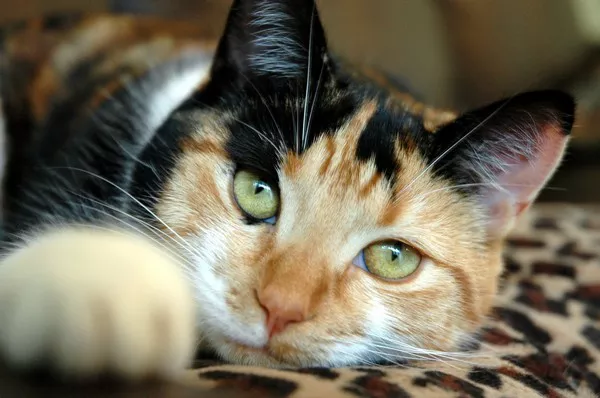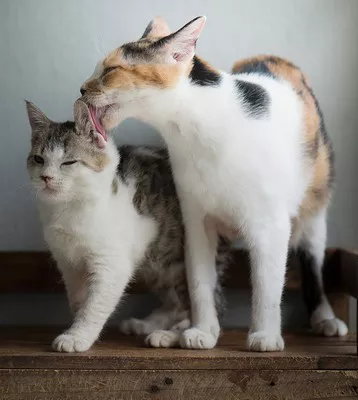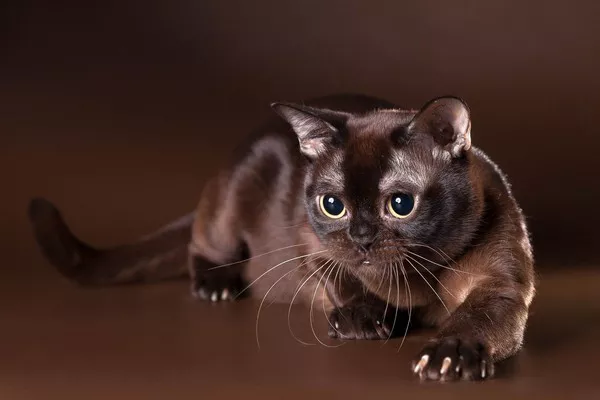Calico cats, adorned with their distinctive tricolor coats, have long been cherished companions in households around the world. As feline enthusiasts welcome these captivating creatures into their homes, questions often arise about the nature of a calico cat’s bonds with its human companions. Among the inquiries, one common theme stands out: Do calico cats bond with one person, forming a unique and exclusive connection? In this exploration, we embark on a journey into the intricate world of feline behavior, seeking to understand the dynamics of calico cat-human relationships and the potential for individualized bonds.
Feline Independence and Social Dynamics
The Essence of Feline Individuality
Before delving into the specific bonds of calico cats, it’s essential to acknowledge the inherent individuality of felines. Cats, by nature, are known for their independence, agility, and unique personalities. Each cat is an individual with its own set of preferences, temperaments, and responses to social interactions.
Unlike some dog breeds that are renowned for their strong pack mentality and loyalty to a single human leader, cats often exhibit a more nuanced approach to social dynamics. While some cats may form close bonds with specific individuals, the nature and depth of these bonds can vary widely.
Socialization and Early Experiences
The foundation of a cat’s social behavior is often shaped during its early stages of life. Kittens that receive positive and consistent interactions with humans and other cats during their critical socialization period—typically between two and seven weeks of age—are more likely to develop well-adjusted social skills. However, individual temperament and genetics also play significant roles in shaping a cat’s social tendencies.
Calico cats, with their unique genetic makeup, may exhibit a range of social behaviors influenced by factors such as breed, environment, and early life experiences. Understanding these elements is crucial for unraveling the complexities of their interpersonal relationships.
The Multifaceted Nature of Feline Bonds
1. Individual Variability: One of the key factors influencing the bond between a calico cat and its human companion is the individual variability of feline personalities. While some calico cats may gravitate toward forming close bonds with a single person, others may display a more sociable and inclusive nature, forming connections with multiple individuals within a household.
2. Genetic Predispositions: Calico cats, like other breeds, may have certain genetic predispositions that influence their behavior. While the tricolor coat is a genetic trait, the personality traits associated with calico cats can vary widely. Genetic factors may contribute to a calico cat’s inclination to form exclusive bonds or exhibit a more gregarious and adaptable nature.
3. Early Socialization: The early socialization experiences of a calico cat can significantly impact its capacity to form bonds with humans. Cats that receive positive interactions and experiences during their formative weeks are more likely to develop trusting and affectionate relationships with their human companions.
4. Environmental Factors: The environment in which a calico cat lives plays a crucial role in shaping its social dynamics. Factors such as the presence of other pets, the overall household atmosphere, and the availability of safe and comfortable spaces can influence whether a calico cat forms exclusive bonds or engages with multiple family members.
5. Human Interaction Styles: The way humans interact with their calico cats also contributes to the development of bonds. Cats may respond positively to gentle and patient interactions, while negative experiences or forceful handling can lead to distrust. Understanding a calico cat’s individual preferences and respecting its boundaries fosters the development of strong and positive bonds.
The Spectrum of Calico Cat Bonds
1. Exclusive Bonds: Some calico cats may indeed form exclusive bonds with one person within a household. This could be influenced by the cat’s individual temperament, the nature of interactions with a specific individual, or a combination of genetic and environmental factors. In such cases, the cat may display a preference for the chosen individual’s company, seek out their attention, and exhibit signs of attachment.
2. Social Butterflies: On the opposite end of the spectrum, some calico cats may embrace a more social and adaptable approach. These felines may form bonds with multiple family members, enjoying interactions with each individual in the household. Their sociable nature may lead them to engage in group activities, seek attention from various sources, and contribute to a harmonious and inclusive household dynamic.
3. Selective Bonds: Many calico cats fall somewhere in between the extremes, exhibiting a selective approach to forming bonds. These cats may form strong connections with specific individuals while also maintaining amicable relationships with other family members. The selectivity in forming bonds may be influenced by the cat’s comfort level, experiences, and the quality of interactions with each individual.
Factors Influencing Calico Cat Bonds
1. Respect for Individual Boundaries: Calico cats, like all felines, appreciate respect for their individual boundaries. Understanding a calico cat’s cues, preferences, and comfort zones is crucial for building trust and fostering positive interactions. Forced or intrusive handling can lead to stress and hinder the development of strong bonds.
2. Positive Reinforcement: Positive reinforcement through treats, play, and affectionate interactions can strengthen the bond between a calico cat and its human companion. Calico cats that associate positive experiences with specific individuals are more likely to form lasting and affectionate connections.
3. Consistent Care and Routine: Establishing a consistent routine and providing reliable care contribute to a calico cat’s sense of security. Cats often thrive on predictability, and a stable environment fosters trust and comfort, enhancing the likelihood of forming strong bonds.
4. Interactive Play: Interactive play is a powerful bonding tool for calico cats. Engaging in play sessions with toys that stimulate their natural instincts provides an opportunity for positive interaction and strengthens the bond between a calico cat and its human companion.
5. Creating Safe Spaces: Calico cats, particularly those with a more reserved or sensitive temperament, may benefit from the creation of safe and comfortable spaces. Providing cozy beds, hiding spots, and elevated perches allows calico cats to observe their surroundings and engage at their own pace, contributing to the development of bonds based on trust.
Addressing Challenges and Building Bonds
1. Patience and Understanding: Building bonds with a calico cat, whether exclusive or shared, requires patience and understanding. Cats may take time to acclimate to new environments or individuals, and respecting their pace is essential for fostering trust and affection.
2. Consistent Positive Reinforcement: Consistent positive reinforcement through gentle interactions, treats, and play helps create positive associations. Calico cats that associate their human companions with positive experiences are more likely to form strong and lasting bonds.
3. Observation and Responsiveness: Observing a calico cat’s behavior, cues, and preferences is crucial for tailoring interactions to suit its individual needs. Responsiveness to the cat’s communication, whether through body language or vocalizations, fosters a deeper understanding and strengthens the bond.
4. Veterinary Care: Regular veterinary care is essential for ensuring the physical and emotional well-being of a calico cat. Addressing any health concerns promptly contributes to a cat’s overall comfort and can positively impact its ability to form and maintain bonds.
5. Enriching the Environment: Enriching the environment with stimulating toys, scratching posts, and interactive activities contributes to a calico cat’s mental and physical well-being. An enriched environment fosters contentment and enhances the cat’s receptivity to bonding.
Conclusion
In the captivating realm of calico cats, the question of whether they bond with one person unfolds as a nuanced exploration into the complexities of feline behavior. While individual variability, genetics, and early experiences contribute to the formation of bonds, calico cats may display a spectrum of social tendencies—from exclusive bonds to a more sociable and inclusive approach.
Understanding and appreciating the unique personalities of calico cats, respecting their individual preferences, and approaching interactions with patience and positive reinforcement pave the way for meaningful and lasting bonds. Whether a calico cat chooses to form an exclusive connection with one person or embraces a more social approach within the household, the beauty of these feline relationships lies in the mutual trust, affection, and companionship that unfold in the shared journey of cat and human.
























